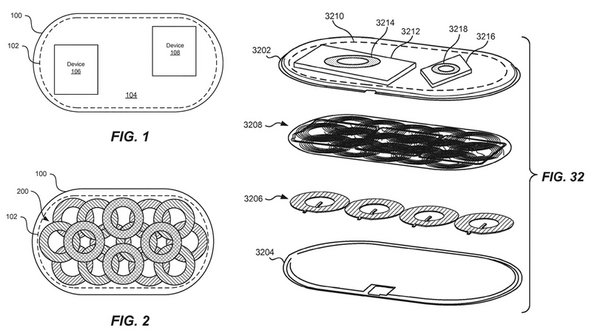In a surprising turn of events, Apple has cancelled its long-awaited AirPower wireless charging mat. The company says the product didn’t meet its “high standards,” but wasn’t specific as to why. We’ve been watching this space carefully and have an informed guess as to what happened.
AirPower was first introduced to the public in September of 2017 during Apple’s iPhone X reveal. The company promised a single wireless charging mat that could charge three devices at the same time, like your iPhone, Apple Watch, and your AirPods (the last of which just got wireless charging capabilities).
Apple planned on releasing AirPower the year after the iPhone X, in 2018. However, it was reportedly hit with numerous delays. And as 2018 dragged on, the speculation of its cancellation loomed large, especially after Apple completely wiped its website clean of any mention of the product a full year after its announcement.
Starting in 2019, though, a glimmer of hope emerged: rumors surfaced that AirPower’s production was ramping up, pointing to the possibility that this product would finally be close to shipping. So close, in fact, that an iOS 12.2 beta—released just ten days before the AirPower’s cancellation—included official support for the now-defunct wireless charger. And the second-generation AirPods even have an illustration of the wireless charging mat on the back of the box.

With that said, we have a theory as to why Apple’s wireless charger fell completely flat during its last-second Hail Mary.
Overheating and Interference
Wireless charging pads use electromagnetic induction to juice up your phone. Both the pad and your phone contain wire coils: the pad draws current from the wall and runs it through the coil, creating an electromagnetic field. That field induces an electric current in your phone’s wire coil, which it uses to charge the battery.
However, the electricity being transmitted to your phone isn’t perfectly clean or ideal. It generates some noise, which can interfere with other wireless devices. That’s why the FCC (and regulatory bodies in other countries) set strict limits on wireless emissions.
Noise from a single coil might not be a problem, but each charging coil generates a slightly different waveform. When those waves overlap, the constructive interference intensifies their strength. Just like when two ocean waves collide and combine their height, radio frequencies can combine their intensity as they interact.
Managing these overlapping harmonic frequencies is incredibly challenging, and gets harder the more coils that you are integrating. From patent filings, it looks like Apple’s ambitious plan was to use considerably more coils than other charging pads on the market.

Other multi-device wireless chargers place two or three coils side-by-side, but require you to fiddle with your phone to find the “sweet spot” over one coil for it to start charging. With AirPower, Apple was trying to create one large charging surface using overlapping coils, allowing it to power multiple devices from anywhere on the mat. But that introduces multiple challenges.
We asked an engineer with experience building wireless charging systems what obstacles Apple was working to overcome. “Over time, these harmonics add up and they become really powerful signals in the air,” explains William Lumpkins, VP of Engineering at O & S Services. “And that can be difficult—that can stop someone’s pacemaker if it’s too high of a level. Or it could short circuit someone’s hearing aid.” If Apple’s multi-coil layout was spinning off harmonics left and right, it’s possible AirPower couldn’t pass muster with US or EU regulations.
Part of what’s astonishing about the AirPower cancellation is how last-minute it was, right on the heels of the AirPods 2 release. But Lumpkins says that happens sometimes. He speculated that Apple had AirPower working in their labs: ”Well, so what always happens is you get it functional first. No one looks at [electromagnetic interference] until the end.” The FCC rules for wireless charging devices like AirPower are quite strict, and limit exposure at 20 cm (8 in) above the device to 50 mW/cm2.
Rumors have circulated for months about AirPower’s overheating issues, which would click nicely into place with this theory. In order to power multiple devices through a large array of coils, they would need a significant amount of power. “Overheating means they’re putting too much current into it, which means they’re trying to up the power level,” says Lumpkins. “My guess is they’re trying to pump out so much of a field, which is getting it to overheat.”
Apple boxed themselves into an electromagnetic corner. What they wanted to do was physically possible—and they surely had it working in the lab—but they couldn’t consistently meet the rigorous transmission requirements that are designed to keep us safe from our gadgets.




0 Comments